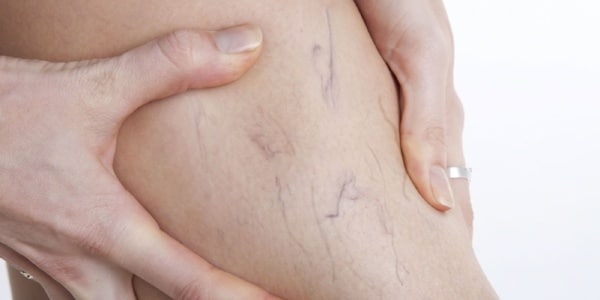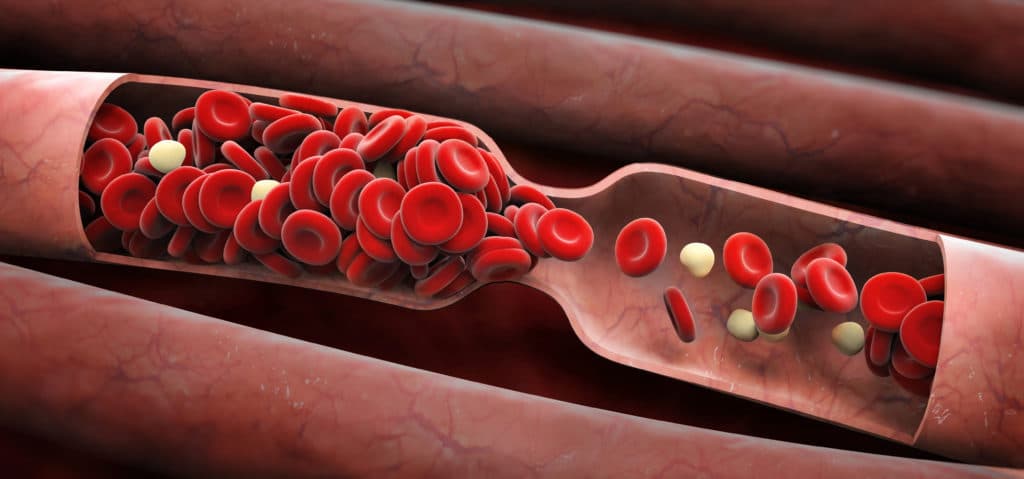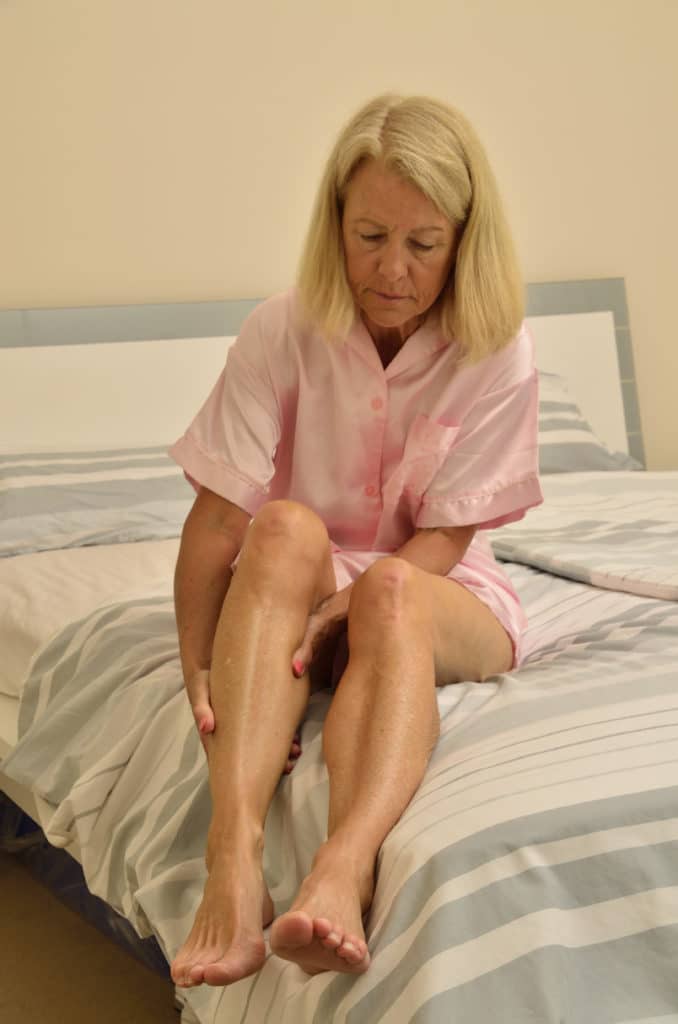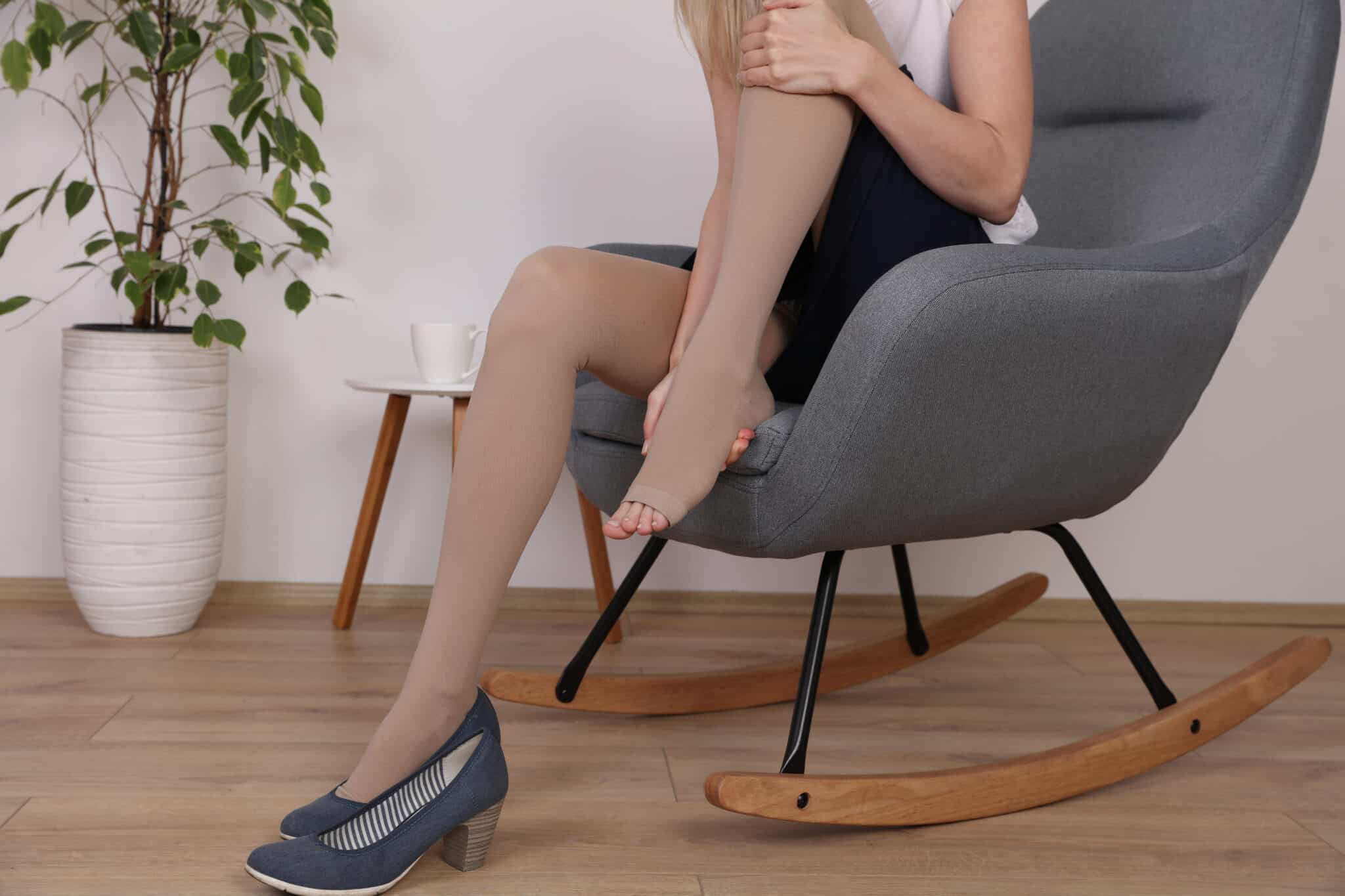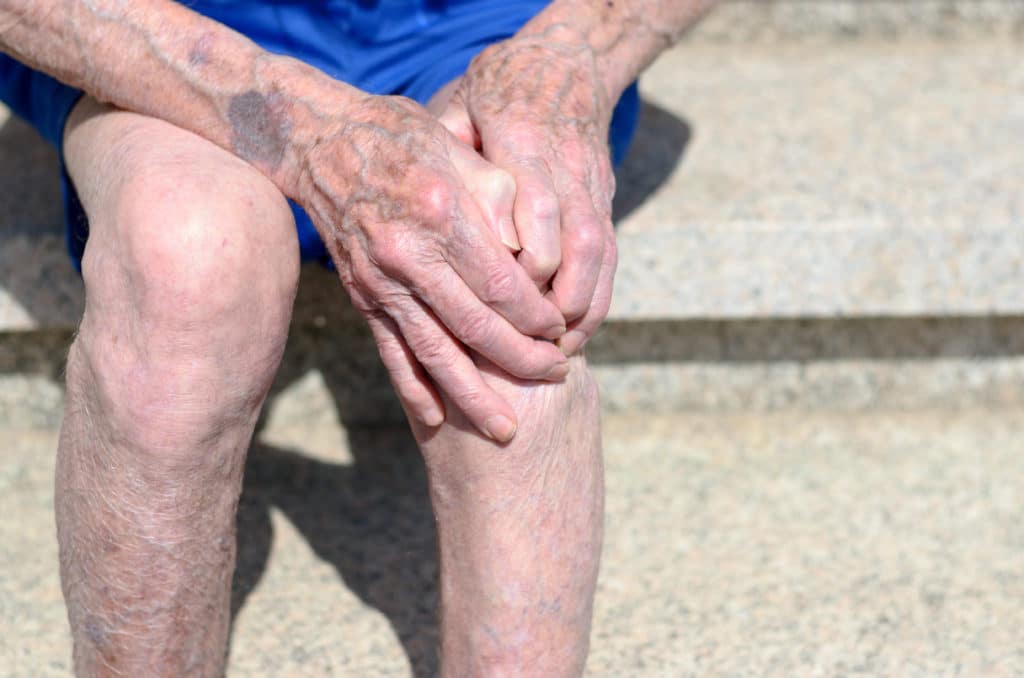
Deep Vein Thrombosis blood clots can be deadly but are preventable!
Risks of Deep Vein Thrombosis
Deep Vein Thrombosis (DVT), also referred to as Deep Venous Thrombosis, is a blood clot located within a deep vein, usually in the leg. A blood clot that breaks free and travels up to the heart or lungs is referred to as a Pulmonary Embolism (PE), which can stop blood flow and cause sudden death. The CDC estimates up to 100,000 Americans die every year from preventable DVT/PE
In addition, Deep Vein Thrombosis blood clots in the leg can permanently damage veins. The result in 50% of DVT survivors is Chronic Venous Insufficiency which results in long-term leg pain, heaviness and swelling that can progress to difficulty in walking, changes in skin color and open leg sores (known as leg ulcers). Deep Venous Thrombosis can significantly impair quality of life.
Causes of Deep Vein Thrombosis
Many patients ask us, "can varicose veins cause blood clots?" According to a recent study, 5% of patients diagnosed with chronic venous insufficiency, compared to the general population, are at risk for DVT. There is a distinct increased risk for patients over 70-years-old and obese. There are several factors known to contribute to the risk of DVT although a blood clot can occur in almost anyone.
- Heredity (Genetics)
- Age
- Obesity
- Smoking
- Lack of Exercise
- Pregnancy or Recent Birth
- Recent Surgery or Hospitalization
- Cancer Treatments
- Prolonged Sitting (Airplane Travel)
- Extended Bed Rest
- Oral Contraceptives
- Hormone Replacement Therapy
- Alcohol Consumption
Symptoms of Deep Vein Thrombosis
- Increased warmth in the affected area
- Pain or tenderness in the leg, ankle or foot
- Red or discolored skin
- Swelling in the affected area
Treatment of Deep Vein Thrombosis
The absolute best way to diagnose Deep Venous Thrombosis is with a Full Vein Exam and Duplex Ultrasound. A medical clinic with an experienced vein specialist should be able to get you in the same day for diagnosis if you have any concern about blood clots in your legs. Treatment and prevention will be accomplished in several ways depending on the patient risk factors and severity but usually starts with blood thinning medication.
Prescription compression stockings are a common preventative measure as are range of motion exercises, treating underlying blood disorders and vein therapy for Chronic Venous Insufficiency. An experienced vein doctor can discuss all treatment options with you after proper diagnosis from a Full Vein Exam and Duplex Ultrasound.
Question: I have spider veins on my legs and they really hurt to the touch. Can that be dangerous to my health? Answer: In the large picture, pain associated with spider veins is not life threatening. It would be worthwhile to have an evaluation by a qualified provider to see if these spider veins are…
Read MoreI am scheduled for a right leg radiofrequency ablation. I have venous insufficiency in the saphenous vein and have had a blood clot before. Question: In 2006, I underwent an artificial lumbar disk implant. This failed causing artificial disk to move into the spine. While surgeon removed the artificial disk implant, he nicked the liac…
Read MoreMy doctor said my vein is too large to have sclerotherapy performed first, is this true? Question: I have a few visible spider veins on my lower leg that I want treated with foam sclerotherapy. However, the doctor wants me to do endovenous laser treatment before the sclerotherapy. According to him, my vein is way…
Read MoreI’m having the same pain that I had before my ablation procedure, except it is in a different new location. How long will this go on? Question: It’s been 2 months since my GSV endovenous laser ablation procedure. I have the same pain that I had before the procedure, except it’s in a new location.…
Read MoreI recently had the VNUS procedure done (both legs, multiple veins). Is it normal to have open, circular wound with redness and slight weepiness? Question: All of the other areas are healing nicely, but the area on my shin (a bit off center) has a much larger wound. It has been quite red in the…
Read MoreQuestion: How big of a size do compression stockings come in? Answer: Compression socks should be comfortable and supportive. If the stockings are making your symptoms worse, it is likely that they do not fit you correctly. There are numerous companies that make standard sized compression stockings. Some make 7 to 8 different sizes. Additionally,…
Read MoreQuestion: WHAT CAN I DO TO GET RID OF MY VARICOSE VEINS? Answer: There are numerous options to treat varicose veins. Some are considered medically necessary, while others are strictly cosmetic. Larger veins are treated in a myriad of ways depending on the provider you consult with and their proficiency in a given intervention. The…
Read MoreQuestion: I knelt down the other day and injured the large varicose vein over my knee. It bruised quickly and felt very sore, so I put a pressure bandage on it. Since then, the vein bruise has spread and is now about 12″ up my thigh. It is very red, and I’m not sure what…
Read MoreQuestion: What treatment options are available for my CVI? I can’t sit or stand in one place and I have heavy, aching legs all of the time. I started to have achy, heavy leg feelings about a month after I sprained my right ankle and scratched my left knee last April. I was diagnosed with…
Read MoreQuestion: During the EVLT laser procedure I really didn’t feel well, especially when the laser was on. I felt dizzy and the smell of “burning” freaked me out. Even after I was done, it took me couple hours to feel normal again. Is that normal? Answer: The “odor” and sometimes a taste is normal during…
Read More
